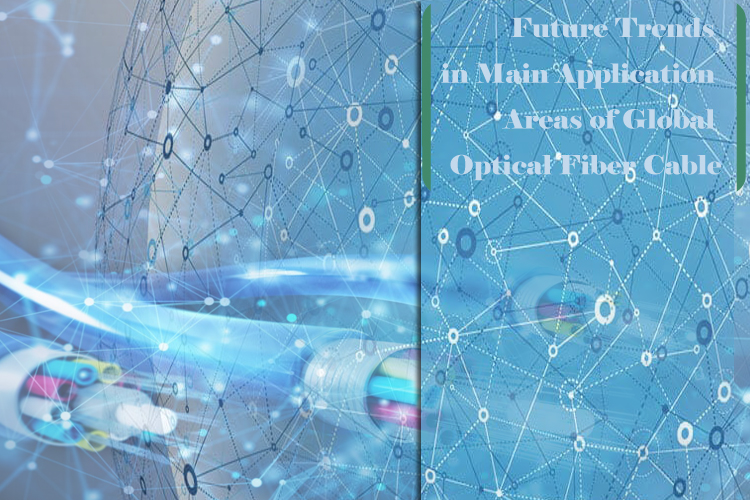Future Trends in Main Application Areas of Global Optical Fiber Cable
Introduction
The optical fiber cable industry has continually evolved over the past few decades to meet the increasing demands of today’s fast-paced world. With the rapid advancements in technology, the main application areas of global optical fiber and cable are bound to see some significant changes in the future. In this article, we’ll discuss some of the most probable shifts in the main application sectors, including telecommunications, data centers, and smart cities.

1. Telecommunications
Undoubtedly, the telecommunication industry is among the largest consumers of optical fiber cable. With the exponential growth in internet use, video streaming, and online gaming services, the demand for high-speed, reliable, and efficient communication networks has never been greater. As we progress towards the future, some of the critical changes in the telecommunication sector include:
a) Emergence of 5G Networks: The rollout of 5G networks promises to bring a significant change in the global telecommunication landscape. To achieve the desired data rates and ultra-low latency levels, 5G requires a robust and efficient optical fiber infrastructure. As 5G deployment progresses, the demand for high-capacity optical fiber cable will continue to increase.
b) Growing Fiber-to-the-Home (FTTH) demand: FTTH has become the standard for high-speed broadband connectivity, and this trend is expected to continue. As the demand for bandwidth and faster internet access rises, we can anticipate a further surge in FTTH deployments, driving the growth of optical fiber cable usage in this sector.
2. Data Centers
Data centers are the backbone of our digital world, and with increasing reliance on the cloud, their significance in the optical fiber cable industry is only expected to grow. Some of the crucial trends shaping the future of data centers are:
a) Expansion of Hyperscale Data Centers: Hyperscale data centers have become essential in handling information and computing resources for large enterprises and cloud service providers. As more companies and users depend on cloud-based services and applications, the need for larger and more sophisticated data centers will grow. Optical fiber cable will play a vital role in catering to the connectivity requirements of these massive data centers.
b) Emergence of Edge Computing: Edge computing involves processing data closer to the source, thereby reducing latency and increasing efficiency. As the popularity of edge computing and the Internet of Things (IoT) rises, there will be an increasing need for efficient and reliable optical fiber networks to facilitate data transfer between edge data centers and central processing units.
3. Smart Cities
The concept of smart cities has gained traction in recent years, with an increasing focus on connected technologies, seamless communication, and sustainable urban development. Some of the future trends in smart cities that will impact the use of optical fiber cable include:
a) Intelligent Transportation Systems: Future transportation networks will rely heavily on advanced real-time traffic management, vehicle-to-everything (V2X) communication, autonomous vehicles, and other communications-intensive technologies. By providing low-latency and high-speed connections, optical fiber cable will be essential to facilitate these intelligent transportation systems.
b) IoT-Driven Infrastructure: As smart cities continue to adopt IoT devices and sensors for monitoring, controlling, and analyzing various city functions, there will be a growing demand for sophisticated and reliable fiber-optic networks to ensure seamless connectivity and data transmission.
Conclusion
As the world continues to embrace digitalization across all sectors, the importance of optical fiber cable shows no signs of abating. Although difficult to predict every innovation that might arise, these projected trends in the telecommunications, data centers, and smart city sectors showcase a promising future for the global optical fiber cable industry. By preparing and adapting to these changes, companies, government entities, and stakeholders in this industry can look forward to seizing new growth opportunities and shaping a connected world.

 The Future of Fiber Optic Communication Network Architecture: Evolution and the Role of SDON Technology
The Future of Fiber Optic Communication Network Architecture: Evolution and the Role of SDON Technology
 What opportunities and challenges does free-space optical communication technology face?
What opportunities and challenges does free-space optical communication technology face?
 Opelink MPO Products for High-Speed Data Center Applications
Opelink MPO Products for High-Speed Data Center Applications
 CWDM vs. DWDM: Which Optical Transmission Technology Should You Choose?
CWDM vs. DWDM: Which Optical Transmission Technology Should You Choose?